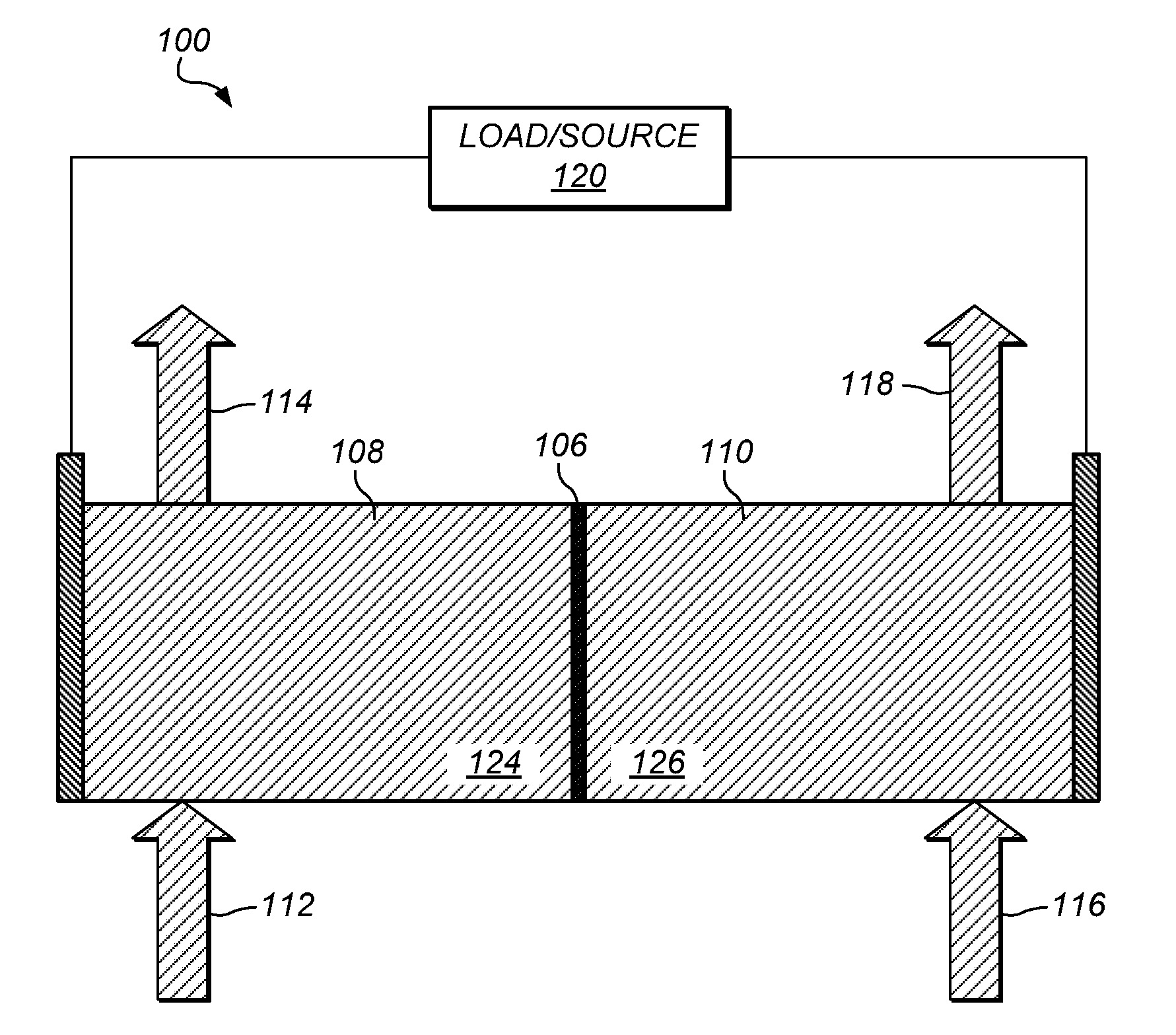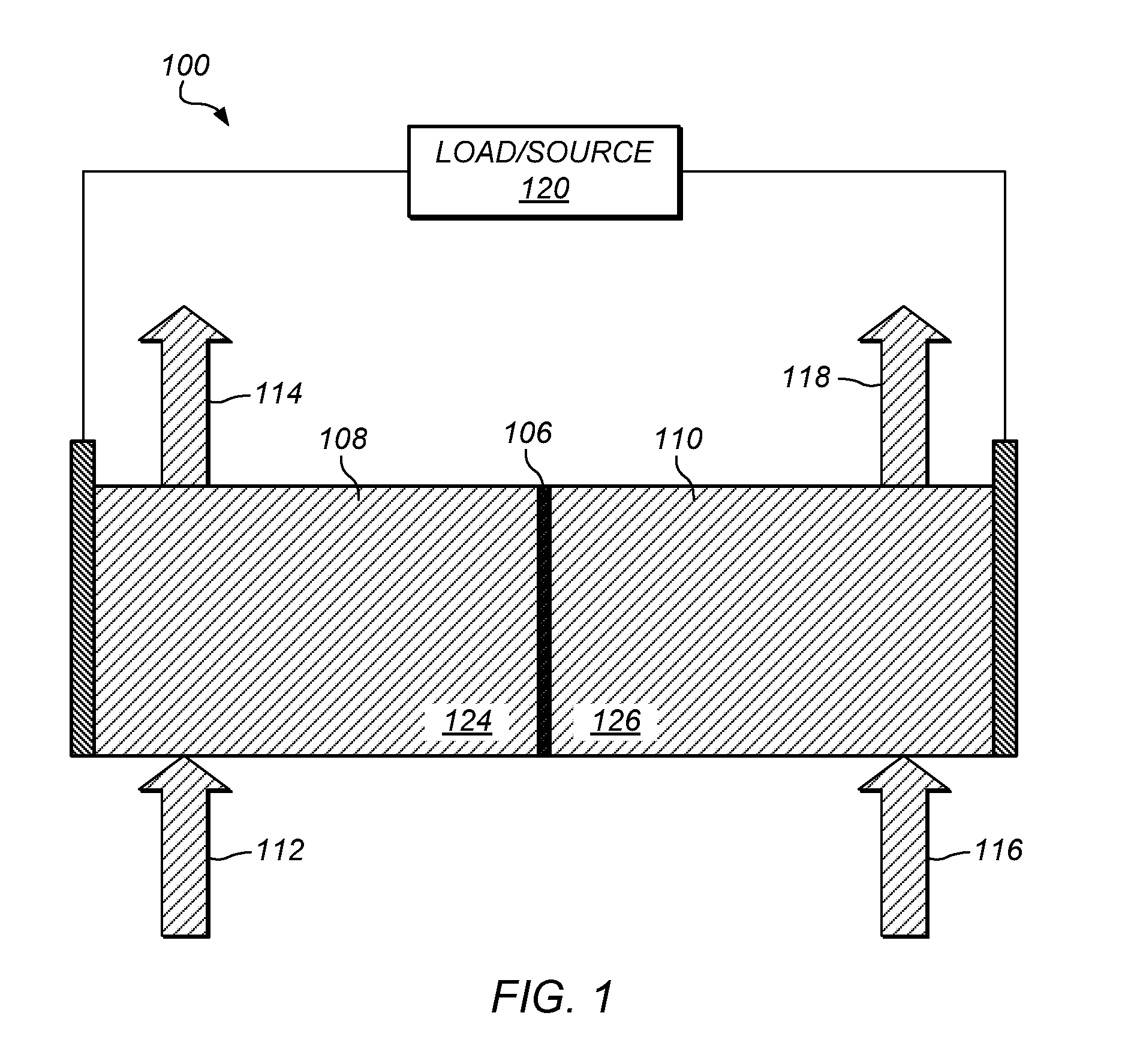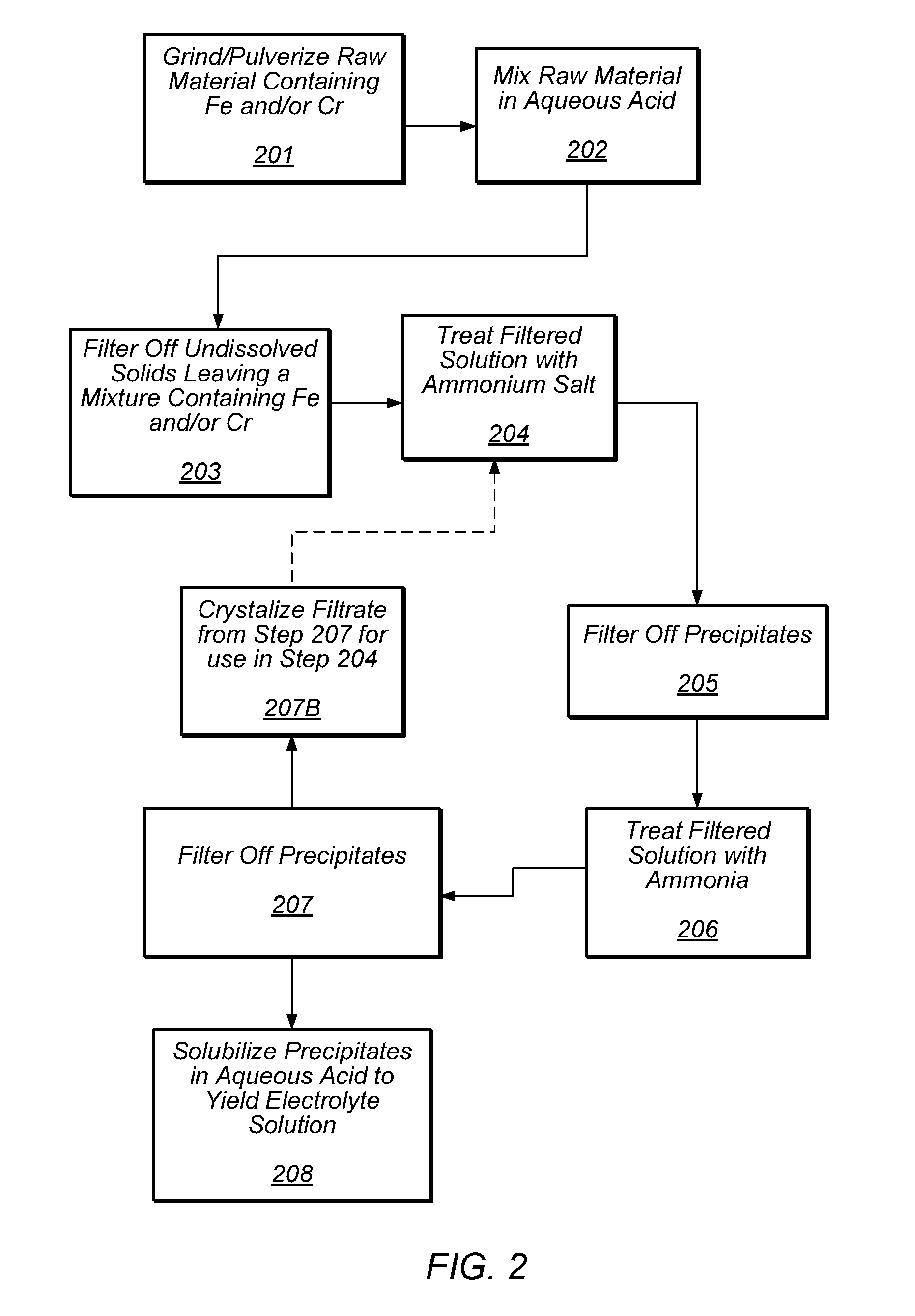Preparation of flow cell battery electrolytes from raw materials
a flow cell battery and raw material technology, applied in the field of preparation and purification of electrolytes and electrolyte solutions, can solve the problems of reducing the efficiency of the flow cell battery, adversely affecting the coulombic efficiency of the battery, and materials that are typically too expensive for commercial use in redox batteries
- Summary
- Abstract
- Description
- Claims
- Application Information
AI Technical Summary
Benefits of technology
Problems solved by technology
Method used
Image
Examples
example 1
[0057]A 5 L three-necked flask fitted with a reflux condenser, mechanical stirrer and a Teflon coated thermocouple was charged with 3 M H2SO4 (3000 mL). The reflux condenser was connected through a gas outlet adapter to Tygon tubing to vent the hydrogen gas in the fumehood. Ground ferrochrome (India, lot A408, 120 g, 18-35 mesh) was added to the acid in small quantities (ca 4 g) with constant stirring at 80 C. After the completion of addition, which took approximately 1 h, the reaction mixture was stirred for 9 h, gradually raising the temperature to 103 C and then filtered through a medium frit funnel using a water aspirator. The green filtrate (2820 mL, 3496 g) was analyzed by UV-VIS spectrophotometry for Cr(III) and Fe(II) concentrations which were found to be 0.56 M (λmax 584 nm) and 0.17 M (λmax 970 nm) respectively. The H2SO4 concentration was measured to be 2.14 M by titration against 1 M NaOH (to a pH of 4.0). The concentrations of Co, Ni and Cu were measured by ICP-MS to be...
example 2
[0059]A 5 L three-necked flask fitted with a reflux condenser, mechanical stirrer and a Teflon coated thermocouple was charged with 5 M H2SO4 (1000 mL). The reflux condenser was connected through a gas outlet adapter to Tygon tubing to vent the hydrogen gas in the fumehood. Ground ferrochrome (India, lot A408, 40 g, 18-35 mesh) was added to the acid in small quantities (ca 4 g) with constant stirring at 90-100 C. After the completion of addition, which took approximately 1.5 h, iron powder (56 g, 325 mesh) was added in small quantities at 90.0 over 1 h. The reaction mixture was stirred for 6h at 90-100.0 and then filtered through a medium frit funnel using a water aspirator. The green filtrate (2710 mL, 3717 g) was analyzed by UV-VIS spectrophotometry for Cr(III) and Fe(II) concentrations which were found to be 0.61 M (λmax 584 nm) and 0.49 M (λmax 970 nm) respectively. The H2SO4 concentration was measured to be 3.97 M by titration against 1 M NaOH (to a pH of 4.0). The concentratio...
example 3
[0061]Following the procedure in Example 2 and using 4 M H2SO4, the impure electrolyte solution containing chromium, iron, sulfuric acid, cobalt, nickel and copper in the concentrations 0.61 M, 0.5 M, 2.93 M, 12 ppm, 100 ppm and 4.6 ppm respectively was obtained.
PUM
| Property | Measurement | Unit |
|---|---|---|
| pH | aaaaa | aaaaa |
| weight | aaaaa | aaaaa |
| thickness | aaaaa | aaaaa |
Abstract
Description
Claims
Application Information
 Login to View More
Login to View More - R&D
- Intellectual Property
- Life Sciences
- Materials
- Tech Scout
- Unparalleled Data Quality
- Higher Quality Content
- 60% Fewer Hallucinations
Browse by: Latest US Patents, China's latest patents, Technical Efficacy Thesaurus, Application Domain, Technology Topic, Popular Technical Reports.
© 2025 PatSnap. All rights reserved.Legal|Privacy policy|Modern Slavery Act Transparency Statement|Sitemap|About US| Contact US: help@patsnap.com



